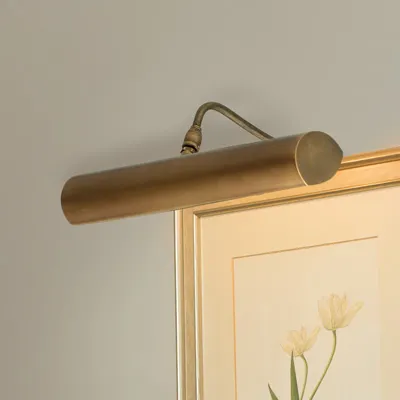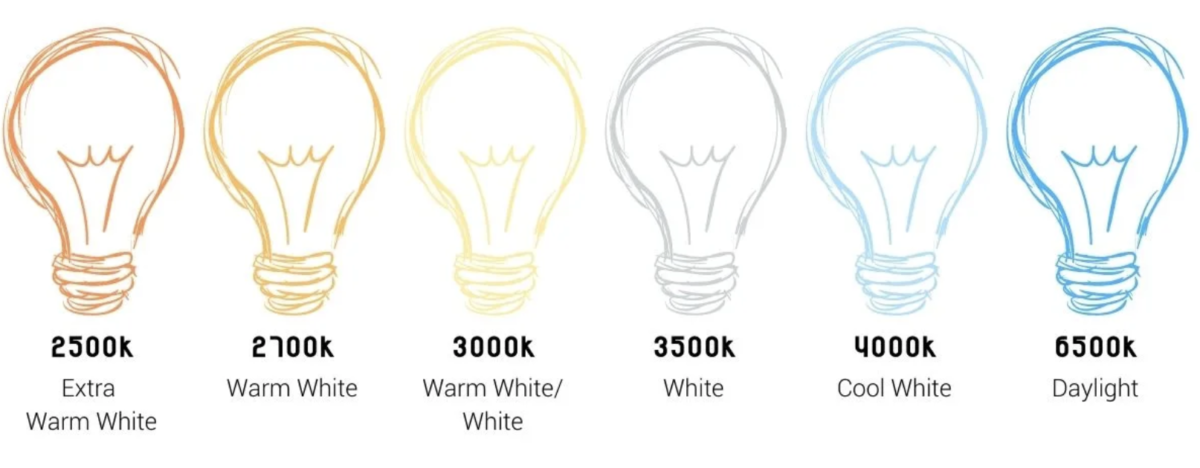There are a few things to keep in mind when choosing how to light your artwork at home. The first is the size of the piece. A small painting will require less light than a large one. The second is the type of lighting you have available. You can use natural light, artificial light, or a combination of both.
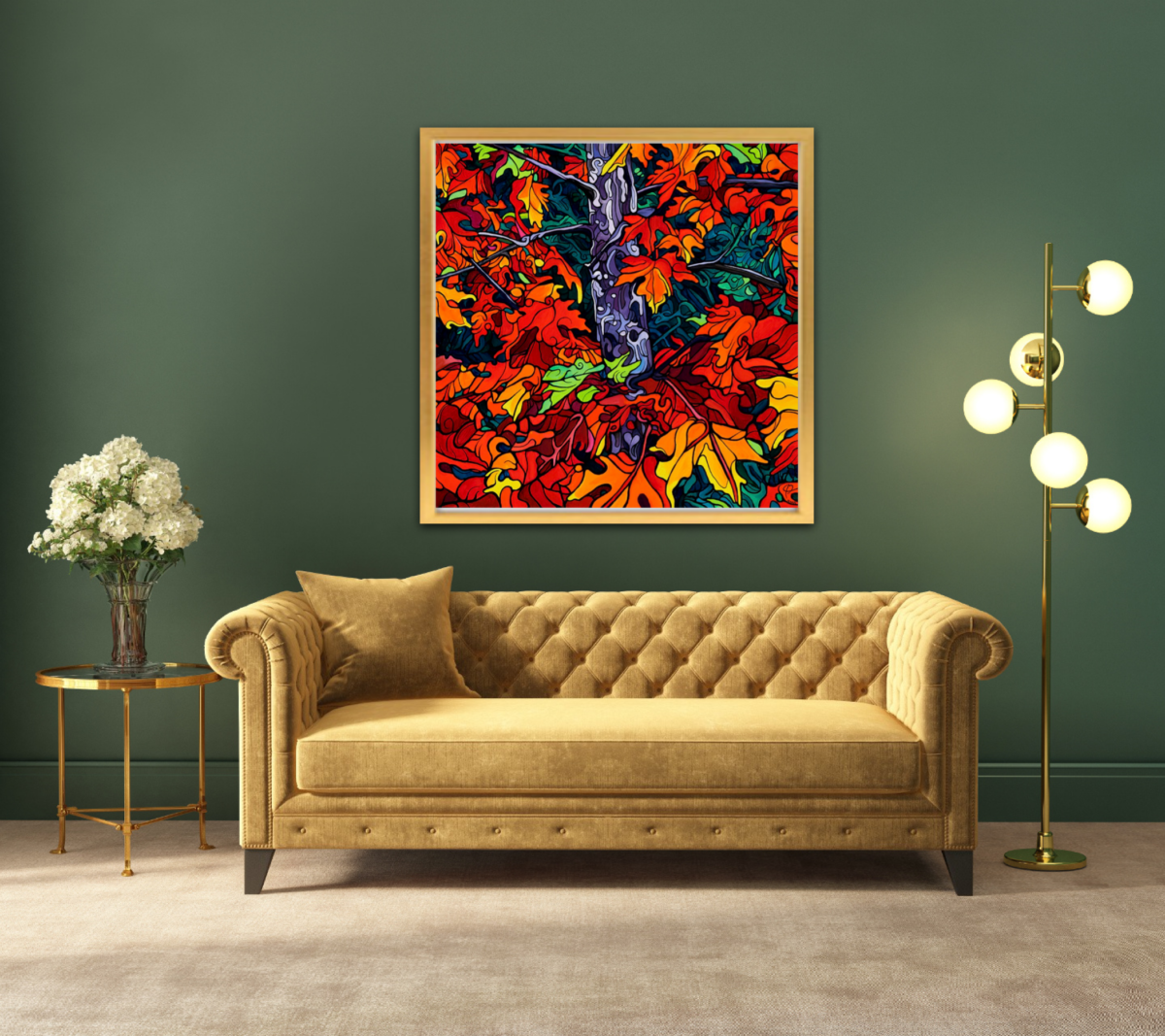
The best way to determine how much light you need is to experiment a bit. Take a look at your painting in different lighting conditions, colour of your room, and see what looks best to you. Keep in mind that the light should not be so bright that it washes out the colors or casts shadows on the surface of the painting.
If you are using artificial light, there are a few different types you can use. Incandescent bulbs give off a warm light that is good for highlighting the colours in a painting. Halogen bulbs are similar to incandescent bulbs, but they give off a brighter light. LED bulbs are becoming more popular because they use less energy and last longer than other types of bulbs. They also give off a bright, even light that is good for lighting artwork.
When using any type of artificial light, it is important to place the light source behind the painting so that the light shines on the surface of the artwork. You can use a floor lamp, table lamp, or track lighting to achieve this. If you have a ceiling fan with a light attached, you can also use that to light your painting.
Another option is to use spotlights. These are small, focused lights that you can direct at your painting. Spotlights are available in both incandescent and LED versions.
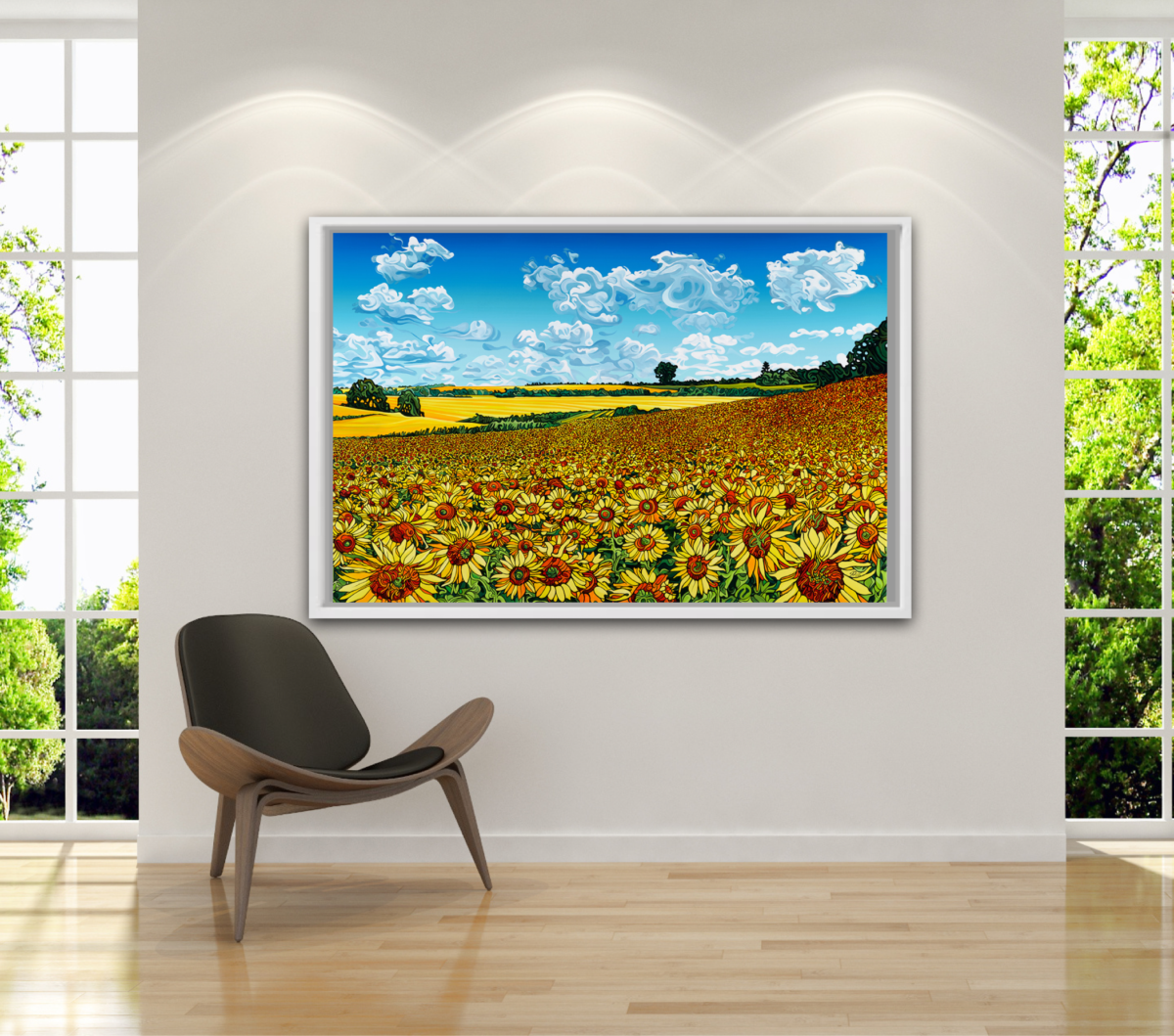
If you’re like most people, you probably don’t think too much about how to light your artwork at home. After all, isn’t it just a matter of finding a place to put the painting and then turning on a light?
As it turns out, lighting plays a critical role in how your artwork is seen and appreciated. Poor lighting can make even the most beautiful painting look dull and lifeless. On the other hand, good lighting can bring out the colors and details in a painting, making it come alive.
Ceiling lights should be placed at an angle of about 30°- 45° to the artwork. If the fixture is placed too directly overhead, you will have harsh shadows down the painting. If the light angle is too flat, then you will get unpleasant glare off the art.
If the ceiling is very high, then you’ll also want to get a bulb with higher wattage and narrow beam to compensate for the longer distance. A 10° bulb will light a 30”x 30” painting when mounted on a 20-foot ceiling. By taking the time to correctly place your fixtures and bulbs, you can ensure that your fine art is properly lit and showcased in your home.
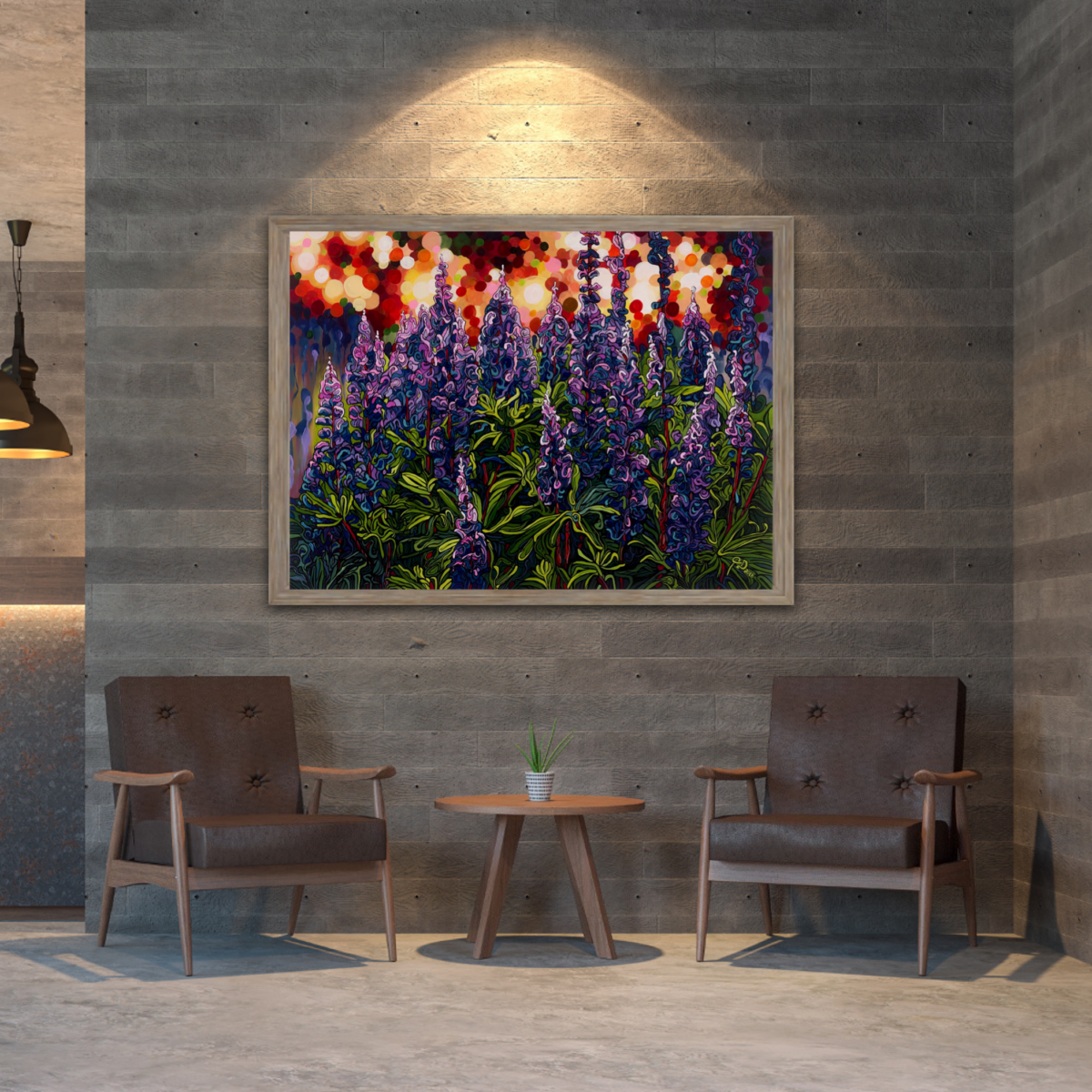
One of the best ways to show off your fine art at home is to use picture-mounted lights. These lights are attached to the back of paintings and can really make them stand out, no matter where they are positioned. Plus, they’re often equipped with art-safe bulbs, so you don’t have to worry about damaging your artwork.
When choosing a picture-mounted light, be sure to consult the lamp specifications and choose one with light that is suitable for your home. This way, you can be sure that your artwork will be properly illuminated and look its best.
There are a few different types of picture-mounted lights available, each with its own set of benefits. Revelite, Lumens, and Cocoweb are a few suppliers that will provide more options and section.
Battery-powered lights are great for those who don’t want to deal with cords or plugs. These lights are also relatively easy to install, as you won’t need to worry about running any wiring. Just be sure to check the batteries regularly and replace them as needed.
Plug-in picture-mounted lights are another popular option and they can be found in a variety of styles. These lights simply plug into an outlet, making them quick and easy to set up. Keep in mind, however, that you’ll need to keep your cords hidden away so they don’t ruin the look of your artwork display.
Colour temperature is a number assigned to a light bulb that tells you how warm (yellow) or cool (blue) the light is. Colour temperature is measured in degrees of Kelvin (K) on a scale from 1,000 to 10,000. Light with a colour temperature below 3500K will look warm, while a colour temperature that is higher than 4000K results in cool tint.
Choosing the right colour temperature depends on the type of artwork you are trying to light. For example, if you are trying to light a painting that has a lot of warm tones, you will want to choose a light with a lower colour temperature. On the other hand, if you are trying to light a painting with cooler tones, you will want to choose a light with a higher colour temperature.
To get started, take a look at your artwork and decide what kind of mood you want to create. Then, choose a light with the appropriate colour temperature to help you achieve that goal.
Of course there is always natural light 🙂
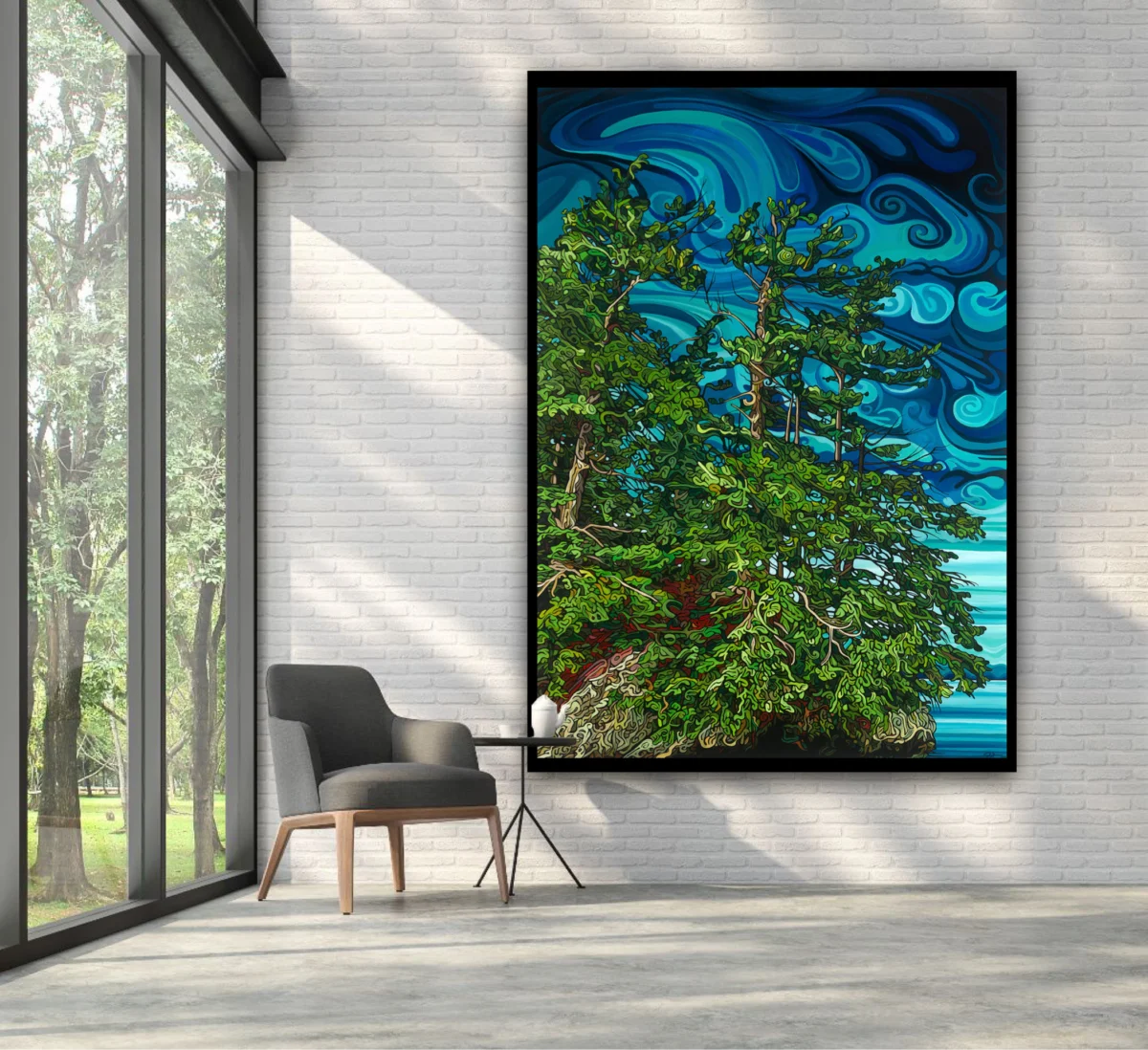
No matter what type of light you use, be sure to experiment until you find the perfect combination for your painting and your home.
Thanks for reading. Jeff Dillon

